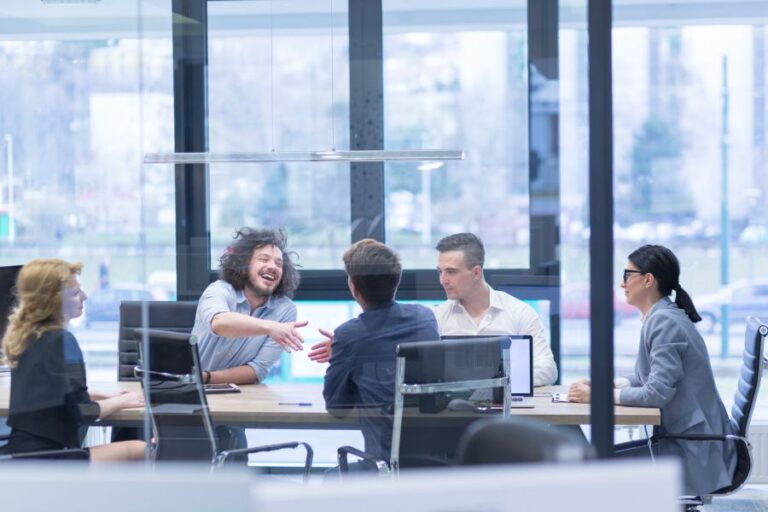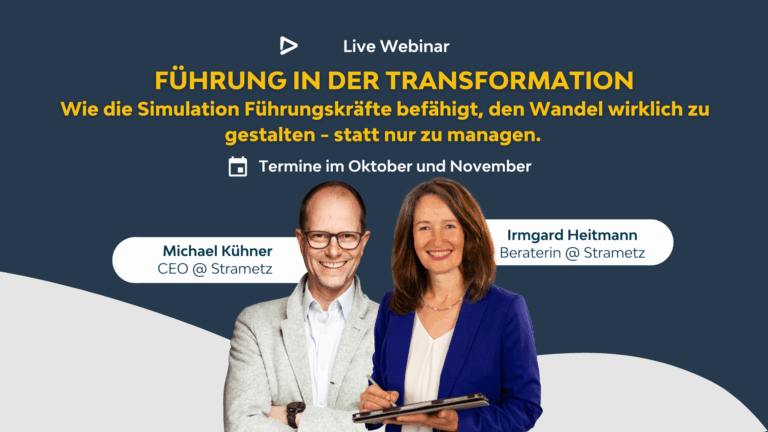Companies need talent
To remain fit for the future, companies need talented people who want to contribute their skills and actively shape the company’s development. Constant change as routine places new demands on companies, managers and employees. In companies, target positions are increasingly becoming moving targets. It is no longer a matter of finding the right talent for a position that has arisen due to economic requirements. The goal is to find the right position for the talent to master economic challenges. In this reverse chain of effects, factors such as self-efficacy, personal responsibility and the employee’s ability to reflect become more important. Next Talent Management supports the transformation from rigid to agile organizational structures and gives talents the freedom to take responsibility.
What does talent management mean?
Talent management involves the systematic identification, development, placement and retention of talent with high potential to take on different roles. The core objective to date has primarily been to ensure that critical functions and positions in the company are filled in the long term.
To go into more detail, we need to include the status quo of the labor market. Demographic and social developments have made it increasingly difficult to find talented individuals with suitable potential who will commit to a company for the long term. Accordingly, talent management must take on a key role that sits within the corporate strategy. In essence, it is about defining the strategic goals of talent management, the question of which paths can be used to find the right talents and how talents can be developed in a targeted manner, thereby retaining them in the company in the long term.
How has talent been developed so far?
Talent development has been a peripheral issue for many companies – something you deal with once a year. Even today, there is little clarity in many companies about the criteria used to identify talent. According to an international study, selection processes are far too often characterized by a lack of transparency. Often, employees do not have the opportunity to apply to a management program on their own. Talent development remains at the executive level. There is little clear communication of the criteria for inclusion in talent management programs. The result: low identification with the company and high employee turnover.
At the same time, many companies are aware that a shortage of skilled workers and managers can be a real brake on growth and that an employer branding strategy is necessary to position the company as an attractive employer in the competitive applicant market.
Until now, talent has been identified primarily on the basis of requirement-related competency models and developed in a classically defined process, thus preparing it for future roles. But in an age when companies have to adapt more quickly to market conditions, this concept is reaching its limits. In the future, competencies alone will no longer suffice.
The limits of traditional talent management
So far, talent has been evaluated and nominated primarily by HR managers and executives on the basis of common competency models. If the nomination process is a one-way street, the result is that non-nominated employees feel disadvantaged, are less motivated and, in the worst case, reorient themselves. This scenario in turn entails high costs and organizational effort.
In contrast, HR developers are observing a decline in commitment and initiative among the nominated talents. The narrowly defined programs, which extend over a long period of time and offer talents hardly any freedom, also have little inspiring and motivating effect. On the contrary, the talent is more inclined to adopt a certain consumer attitude as the chosen one. The corresponding program is served to him bite-sized. This promotes a sense of entitlement instead of initiative. In addition, conventional development programs are often time-consuming – the additional day-to-day business means that talented employees hardly have the opportunity to try out what they have learned.
Next Talent management – the agile variant
In contrast to traditional methods, Next Talent Management takes a new approach. It assumes that the employee is the most valuable resource for the company. From this perspective, every employee is a talent. Everyone has an equal chance to showcase their talent, nominate themselves, and find out what potential they can bring to the table and in what roles.
This concept primarily promotes self-direction, personal responsibility and self-reflection on the part of the candidates, which in turn has a positive effect on the motivation of the employees. The identification of the talents is done by a prefeeding from both sides. Next talent management thus requires a high level of willingness on the part of the talent to take personal development into their own hands, to reflect on it and to ensure that they reach a certain target position by acting on their own responsibility.
The positive effects of strategic talent management are obvious. On the one hand, the company’s employer branding is supported: If all candidates have the same opportunities, the company also becomes interesting for potential applicants. Targeted personnel development ensures the company’s success in the long term. By retaining employees and filling key positions from within the company, Next Talent Management becomes an important foundation for succession planning within the company.
Next Establish talent management in companies
In order to cope with the new tasks, it is not necessary to throw everything that has gone before overboard. In the first step, it is sufficient to analyze existing structures, combine them with new concepts and embed them in an overarching talent management strategy. For a long time, there was no long-term strategic and systematic orientation in most companies. Talent management was located in the HR department and there were only selective activities.
In order to establish new processes, it is important to answer essential core questions:
- What is the objective of talent management for the company?
- What processes can be established to identify and nurture employee talent?
- Who are the target groups for each talent pool?
- How can roles and target positions be defined on the basis of existing talents and which requirement profiles can be derived from this?
- How can companies ensure success control?
From the answers, guidelines can be derived that form the foundation of talent management.
Three steps for successful talent management
Once the strategic direction has been defined, the next step is to design and implement the individual measures. According to this, three essential stages of talent management can be distinguished: Talent identification, talent development, and employee retention and career planning.
1. Talent acquisition
Before new talent can be identified, a requirements profile must be created in terms of the criteria for talent definition. What potentials, characteristics and motives should the talent bring with it in order to recommend itself for future tasks? The nomination of the respective talent can still be made by managers. In addition, employees also have the opportunity to contribute as potential candidates. They independently consider talent, take ownership and try their hand at additional projects. In this way, they not only expand their sphere of influence, but also enrich the corporate strategy at the same time. Self-control and self-efficacy are additional resources that have a positive impact on performance and motivation.
Development centers based on multimodal potential analyses are suitable for identifying the talents of employees for the talent pool. In this way, values and attitudes and deeper personality traits can be captured. The potential analyses are accompanied by reflection processes. A talent profile is used to classify the candidate’s strengths, opportunities and weaknesses: What are the competencies that have not yet been realized? With which potentials can the talent build further strengths? How can weaknesses be compensated for? On this basis, matching with target positions or the potential talent pool takes place. Additional benchmark analyses allow forecasts of the extent to which potential can be translated into competencies and whether the talent is more likely to pursue a management, project management or expert career path.
2. Talent development and career planning
Based on the potential analyses, an individual development plan can now be drawn up that captures the development goals and measures: often a combination of self-learning programs, on-the-job training, and mentoring and coaching. The program is supported by exchanges with colleagues and managers. In addition, the talent expands their responsibilities by taking on additional tasks, projects and deputy positions. This sub-area is also called stretching jobs: the actual areas of responsibility are extended to other areas. Customized development centers are at the heart of talent development. The traditional seminar culture is replaced by active learning in the form of training formats and simulation concepts, accompanied by appreciative feedback and reflection processes. In the subsequent evaluation process, all participants can reflect on whether existing potentials could be developed into real action competencies for the desired career path.
3. Talent placement and retention
The best way to retain talent is through the culture anchor approach. The best way to retain talent is through an attractive corporate culture. This also includes career management, which defines appropriate career guidelines depending on which career paths are taken. Careers nowadays are no longer linear, but mosaic-shaped. This makes transparency and commitment on the part of the companies all the more important. This also includes a stringent consistency culture: If talent and position do not match, this decision must be revised accordingly and an alternative solution found. It is important to involve committed employees directly in the company’s development, to provide them with the necessary information, to encourage and challenge them, and to give them the opportunity to help shape their own careers and positions.
Want to take your talent management to the next level? Get in touch with us. Together with you, we develop the right concept for your talents!











